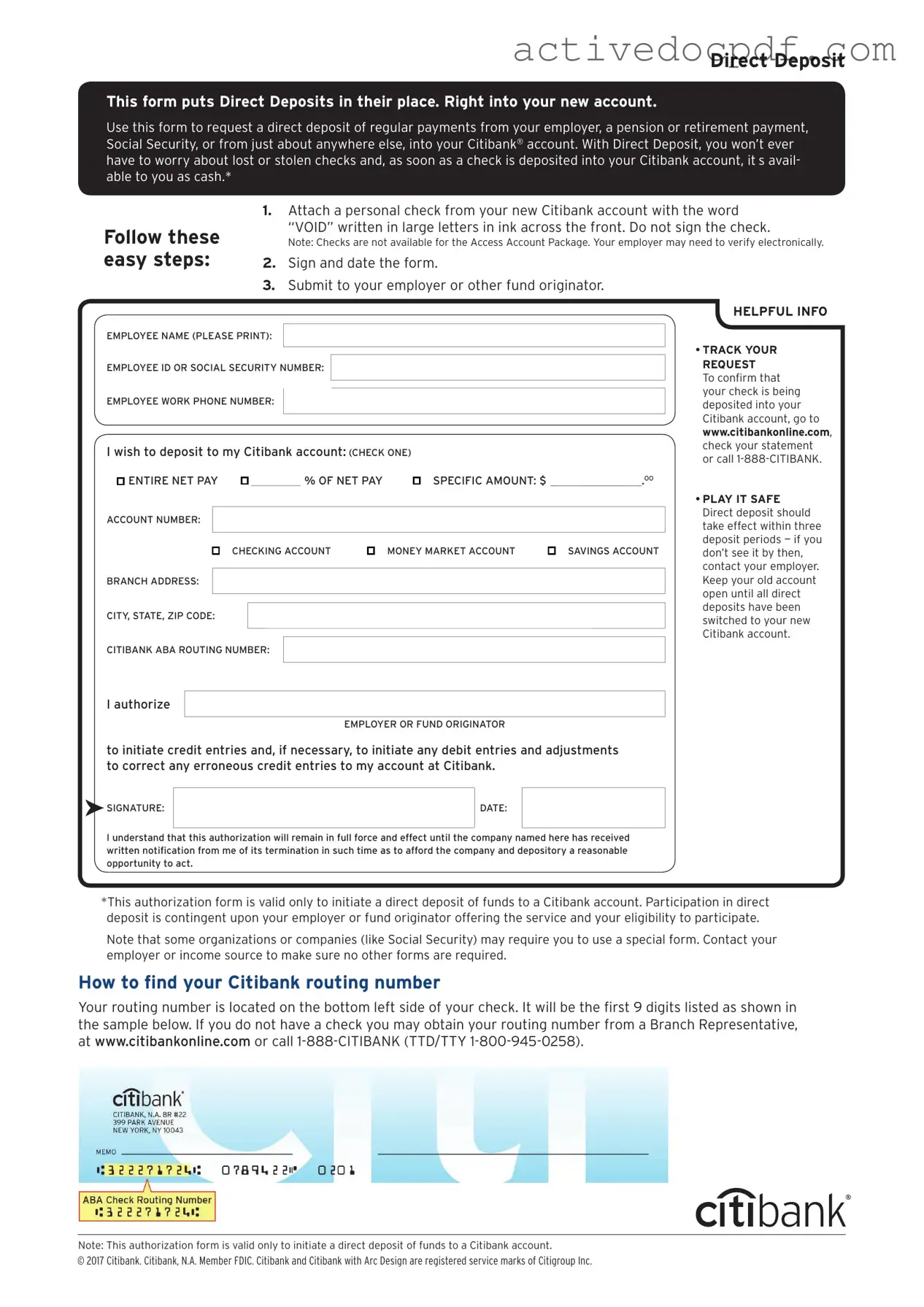Guide to Filling Out Citibank Direct Deposit
Once you have the Citibank Direct Deposit form in hand, you’re ready to begin the process of setting up your direct deposit. This form will help ensure that your funds are deposited directly into your Citibank account. Follow these steps carefully to complete the form accurately.
- Start by entering your personal information at the top of the form. This includes your full name, address, and contact number.
- Next, provide your Social Security Number (SSN) or Tax Identification Number (TIN) in the designated space.
- Locate the section for your bank account details. Here, you’ll need to write down your Citibank account number. Double-check this number for accuracy.
- In the same section, you will find a spot for your bank routing number. This number is essential for directing your deposits correctly. It can usually be found on your checks or by contacting Citibank directly.
- After filling in your account and routing numbers, review the information you’ve provided to ensure everything is correct.
- Sign and date the form at the bottom. Your signature indicates that you authorize the direct deposit.
- Finally, submit the completed form to your employer or the entity that will be processing your direct deposit. Keep a copy for your records.
Once submitted, your employer will process the form, and you should see your direct deposits begin shortly. Be sure to monitor your account statements to confirm that the deposits are being made correctly.
